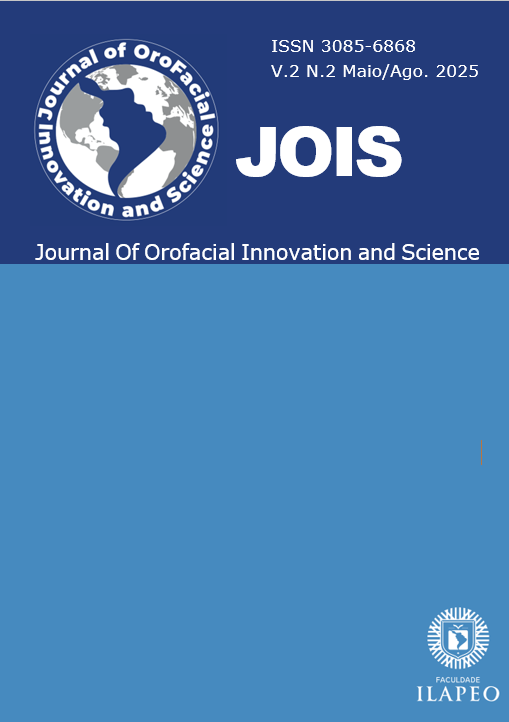Próteses parciais removíveis confeccionadas utilizando o fluxo analógico digital
relato de caso clínico
DOI:
https://doi.org/10.63281/jois.v2i2.82Keywords:
Arcos parcialmente desdentados; Prótese parcial; Tecnologia digital.Abstract
Due to the correlation between edentulism and low socioeconomical level, the Removable Partial Dentures (RPD) will remain an important treatment option when compared to more expensive treatment, such as dental implants. Thus, the use of digital technologies may optimize RPD manufacturing process, associating digital and conventional work flow through extraoral scanning of the work model, simplifying the metallic infrastructure (MI) manufacturing process, with no impairment to MI adaptation accuracy, besides being appliable in every clinical situation (tooth-suported; tooth-mucosa-supported). Therefore, the aim of this report is to describe the clinical case concerning the oral rehabilitation of a Class I Kennedy patient in the upper arch and Kennedy Class III patient in the lower arch with RPDs manufactured through digital flow. In order to do this, after diagnosis, clinical and laboratorial steps were conducted, involving oral adaptation, general mouth preparation, functional and anatomic impressions, specifics preparations, extraoral scanning of work models, MI design in virtual model, MI printing in burnout resin and posterior casting, MI try-in, maxilomandibular recording and artificial tooth selection, clinical and functional evaluation of the tooth display, gingiva color selection, RPD acrilization and installation and further controls. Thus, through the performed rehabilitation, with RPD manufactured through analogic-digital flow, it is possible to infer that the analogic-digital flow used to obtain the RPD has allowed the reduction in laboratorial time and in the obtaining of the MIs with effective adaptation.



